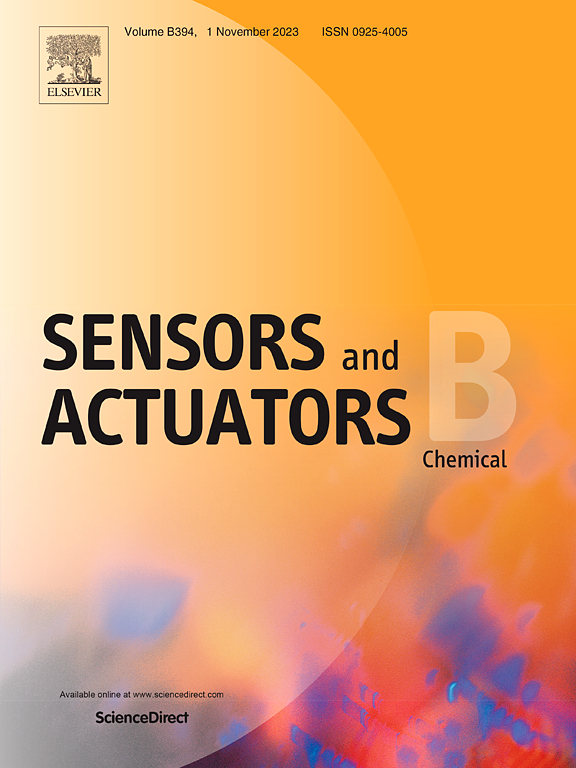A novel acridine-based mitochondria-targeted near-infrared fluorescent probe for the detection of HOCl/ONOO- in vivo
IF 8
1区 化学
Q1 CHEMISTRY, ANALYTICAL
引用次数: 0
Abstract
Fluorescence imaging plays a key role in disease diagnosis. Fluorescent probes constructed with near-infrared (NIR) dyes exhibit negligible light damage to the organism, and excellent deep-tissue penetration. The higher intracellular concentrations of HOCl/ONOO- in cancer cells versus normal cells make these species valuable biomarkers for disease diagnosis. Thus, a novel NIR fluorescent probe AcA-MO is proposed for HOCl/ONOO- detection. AcA-MO is constructed based on a new acridine dye with morpholine groups modifying both ends. AcA-MO has the advantages of rapid response (within 5 s), visual color transition (from colorless to lake green), high sensitivity (detection limits of 10.9 nM for HOCl and 17.5 nM for ONOO-), and excellent selectivity. Furthermore, AcA-MO demonstrated accurate mitochondrial targeting capability. The capabilities of AcA-MO extended from HOCl/ONOO- monitoring in cells and zebrafish to successful implementation of in vivo imaging. Notably, the reaction of AcA-MO with HOCl/ONOO- resulted in a novel NIR dye Ac-MO with excellent properties such as good water solubility, high molar absorbance coefficient (7.82 × 104 L·mol-1·cm-1) and fluorescence quantum yield (Φ = 0.08). Ac-MO provides an innovative design platform for the construction of NIR fluorescent probes. It is anticipated to facilitate the design of additional ROS fluorescent probes, offering robust tools for clinical diagnosis.

一种新的基于吖啶的线粒体靶向近红外荧光探针,用于检测体内HOCl/ONOO-
荧光成像在疾病诊断中起着关键作用。用近红外(NIR)染料构建的荧光探针对生物体的光损伤可以忽略不计,并且具有良好的深层组织穿透性。与正常细胞相比,癌细胞中较高的细胞内HOCl/ONOO-浓度使这些物种成为疾病诊断的有价值的生物标志物。为此,提出了一种新型的近红外荧光探针AcA-MO,用于HOCl/ONOO-的检测。以一种新型吖啶染料为基础,在染料的两端修饰了啉基团,构建了AcA-MO。AcA-MO具有反应快(5 s内)、视觉颜色过渡(无色到湖绿)、灵敏度高(HOCl的检出限为10.9 nM, ONOO-的检出限为17.5 nM)、选择性好等优点。此外,AcA-MO显示出准确的线粒体靶向能力。AcA-MO的功能从细胞和斑马鱼的HOCl/ONOO-监测扩展到成功实现体内成像。值得注意的是,AcA-MO与HOCl/ONOO-反应得到的新型近红外染料Ac-MO具有良好的水溶性、较高的摩尔吸光度系数(7.82 × 104 L·mol-1·cm-1)和荧光量子产率(Φ = 0.08)等优异的性能。Ac-MO为构建近红外荧光探针提供了创新的设计平台。预计这将促进更多ROS荧光探针的设计,为临床诊断提供强大的工具。
本文章由计算机程序翻译,如有差异,请以英文原文为准。
求助全文
约1分钟内获得全文
求助全文
来源期刊

Sensors and Actuators B: Chemical
工程技术-电化学
CiteScore
14.60
自引率
11.90%
发文量
1776
审稿时长
3.2 months
期刊介绍:
Sensors & Actuators, B: Chemical is an international journal focused on the research and development of chemical transducers. It covers chemical sensors and biosensors, chemical actuators, and analytical microsystems. The journal is interdisciplinary, aiming to publish original works showcasing substantial advancements beyond the current state of the art in these fields, with practical applicability to solving meaningful analytical problems. Review articles are accepted by invitation from an Editor of the journal.
 求助内容:
求助内容: 应助结果提醒方式:
应助结果提醒方式:


